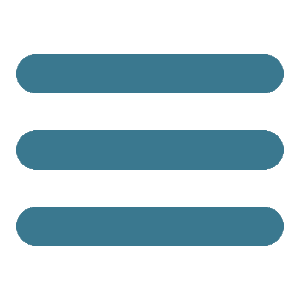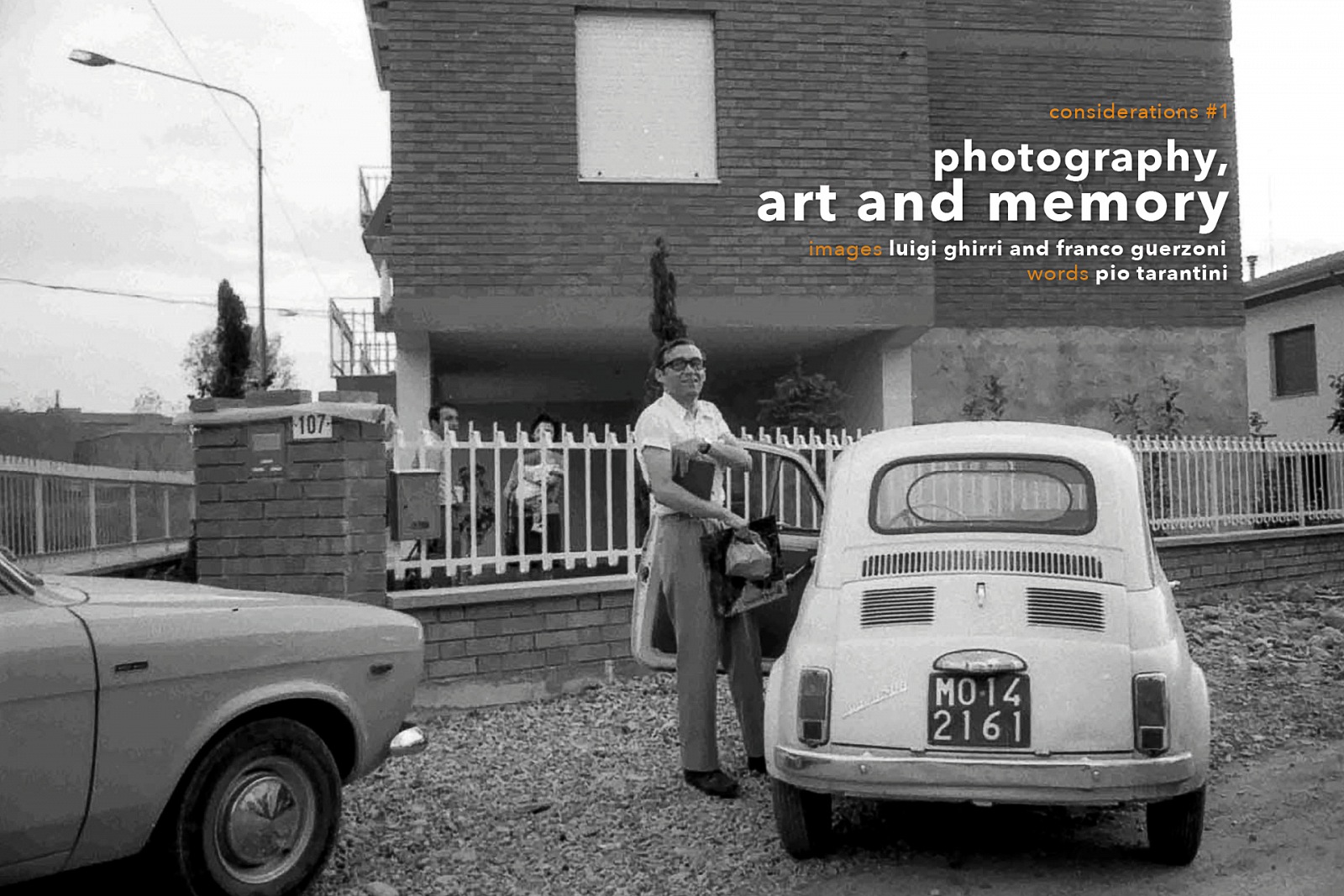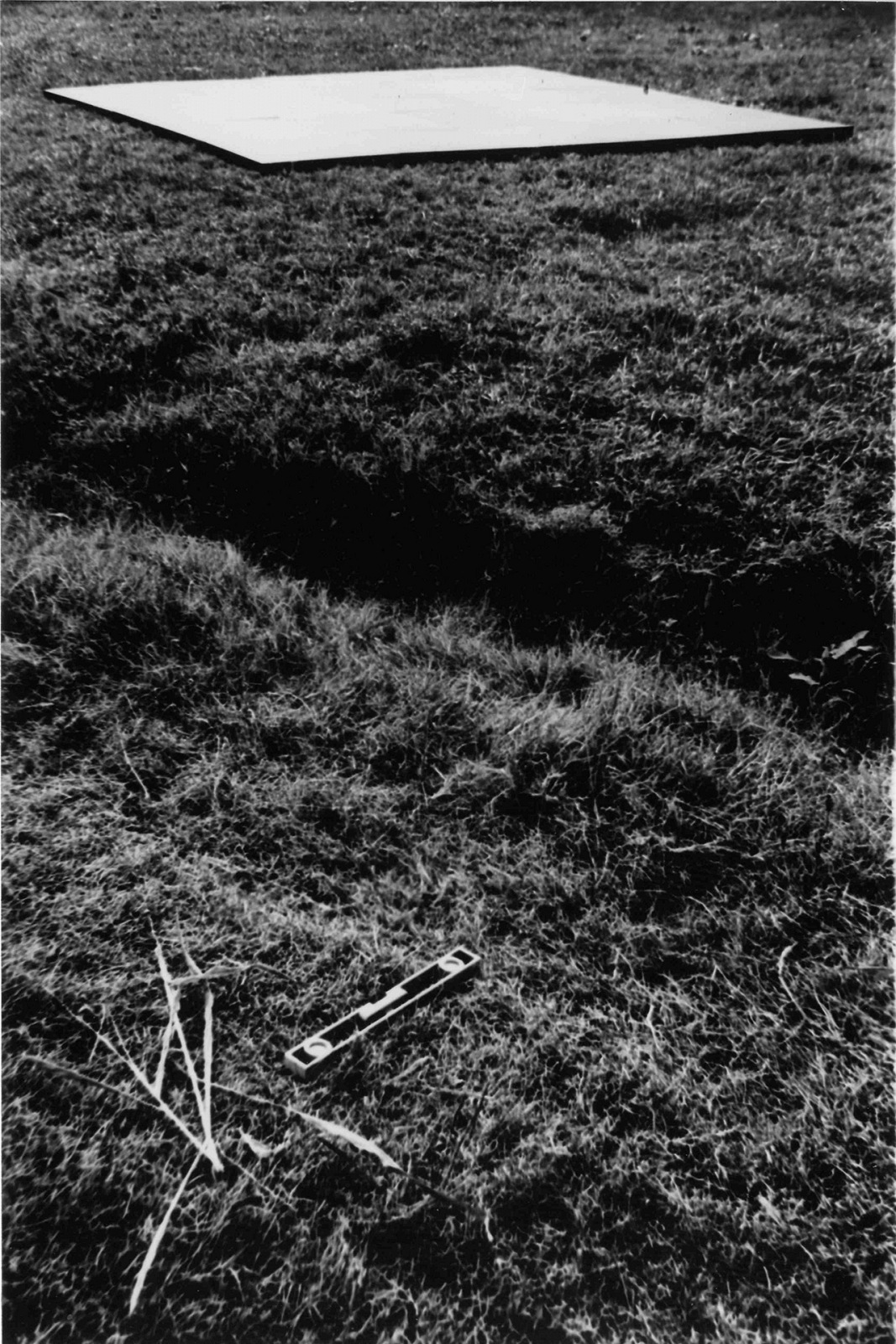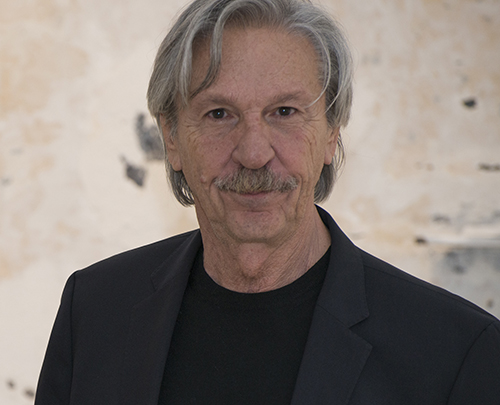On the 29th of October, in a room at the Triennale, in Milan, a conference on the works of the artist Franco Guerzoni took place, in conomitance of the exhibition Nessuno luogo, da nessuna parte -Viaggi randagi con Luigi Ghirri (No place, nowhere – wanderings with Luigi Ghirri). The exhibition takes its name from the the book published by Skira, which narrates the friendship and collaboration between Franco Guerzoni e Luigi Ghirri during their years of training; it talks about their wanders on horseback in the countryside near Modena between the 60s and the 70s. With this project in mind, the conference Per un buon uso delle rovine (For a good use of ruins) was set up in the form of a conversation between the artist Guerzoni himself and the philosopher and psychiatrist Umberto Galimberti.
Their interventions at the conference developed on different levels of interpretation, often with very light and ironic remarks, especially from the artist, Guerzoni. Davide Ferri, curator of the exhibition, led the conversation by appealing to some old black and white photographs created by Ghirri in the period of his friendship with Guerzoni, who with great storyteller skills, recollected and recreated some of the experiences, situations, places and scenarios of that past time of their lives. A debate on memory without regrets but with the awareness that those early laborious and intricate experimentations had been the most important basis for the growth of the two authors, despite taking two very different approaches.
Umberto Galimberti's interventions, cultured and evocative, resulted in deep considerations regarding the concept of time, memory and the ultimate meaning of all things and life. Towards the end of the meeting, with his last words, the philosopher raised various important questions that, due to time constraints, have remained suspended. His last claims appeared to be a bit too definitive and irrefutable leaving very little room for dialogue with the other speakers or with the audience in the room.
The professor's nihilist thesis on the meaning of life can be rationally shared, but it honestly seemed to contradict the entire set up of the conference and the very same account of Franco Guerzoni's experience. It also seemed that some of his statements clashed with the narrative construction around the work of Guerzoni-Ghirri: «[...] we are only preservers of the species» states Galimberti.
|
|
Maybe this is the answer to a very deep truth which is philosophically accepted in our current condition of interpretative skills of human existence; but if this is true – does “true” even exist? - what is the meaning of history, our stories, our efforts and investigations.
Maybe the meaning of existence is to be looked for in little things, inside ourselves, in an ongoing and passionate debate between a nihilist vision - «All is nothing», a statement that according to Galimberti had already been brought into focus by the Greeks and by other thinkers and artists until the magic words in Shakespeare's Macbeth – and a vision that identifies with history, where our little events acquire meaning and give meaning to our existence. In the end of the day, this is one of the tasks of the artist; most probably the main task. Galimberti provocatively argued that only ruined stones remain from ancient Greece despite mentioning more times in his interventions the Greek culture that still remains an inseparable point of reference for the cultural history of man after 2,500 years - «[...] what remains of that history? Nothing, only stones» states Galimberti but also remarks: «History lives in our accounts». If an agnostic or laical vision pushes us to doubt or deny the existence of a “divine” plan, maybe God, as someone wrote, hides in the small things. It is not the traditional comforting God of religions – which by the way is not to underestimate – but the human need to give a meaning to life. It acquires then sense in taking part in a conference where for almost two hours our senses and wits are bewitched by a story, which is in this case the chaotic construction of an artistic experience.
My long teaching experience and my considerations around the problems of photography, of art and their connections to the relevant market, communication and society, makes me think that maybe this conference, although extremely interesting, ended with some kind of coitus interruptus, metaphor used by Guerzoni himself, as the duration of the event did not allow the in-depth analysis that Galimberti's affirmations deserved.
[ Pio Tarantini ]
|

 home
cover ▼
opinions
news ▼
portfolio
post.it
post.cast
video
ongoing
thematicpaths
googlecards
FPtag
home
cover ▼
opinions
news ▼
portfolio
post.it
post.cast
video
ongoing
thematicpaths
googlecards
FPtag






 Franco Guerzoni - Franco Guerzoni was born in Modena in 1948. At the beginning of the 70s, he used photography as a representation tool. His Affreschi (Frescos) are from 1972; in 1973 he produced Archeologie (Archeologies) and Antropologie (Anthropologies), which showed his idea of cultural stratification and the idea of “ancient” as loss. During the 80s he focused on the creation of big wall maps investigating the idea of imaginary geography; Carte di Viaggio, Grotteschi and La parete dimenticata (Travel maps, Grotesques and the Forgotten Wall). At the end of the same decade he also worked on the concept of surface as depth. He presented Decorazioni e rovine (Decorations and ruins) in a private exhibition room at the Biennale in Venice in 1990. From that moment on, he created a big series of works continuing his investigation of time and the poetics of ruin, a sort of archeology without restoration. In 2006 he presented at the GAM in Turin Peasaggi in polvere (Powdered landscapes), series of works emerged from his use of photography in the 70s. From then on, his explorations have been supported by a real research of the conjunction or the transfer from the painting to the wall, following his dream and attempts to create a sort of low relief. This is the constant idea in his work, a light sculpture which derives from a new focus on the wall. Consequently the forgotten wall has become the main, real and preferred place of his most current work.
Franco Guerzoni - Franco Guerzoni was born in Modena in 1948. At the beginning of the 70s, he used photography as a representation tool. His Affreschi (Frescos) are from 1972; in 1973 he produced Archeologie (Archeologies) and Antropologie (Anthropologies), which showed his idea of cultural stratification and the idea of “ancient” as loss. During the 80s he focused on the creation of big wall maps investigating the idea of imaginary geography; Carte di Viaggio, Grotteschi and La parete dimenticata (Travel maps, Grotesques and the Forgotten Wall). At the end of the same decade he also worked on the concept of surface as depth. He presented Decorazioni e rovine (Decorations and ruins) in a private exhibition room at the Biennale in Venice in 1990. From that moment on, he created a big series of works continuing his investigation of time and the poetics of ruin, a sort of archeology without restoration. In 2006 he presented at the GAM in Turin Peasaggi in polvere (Powdered landscapes), series of works emerged from his use of photography in the 70s. From then on, his explorations have been supported by a real research of the conjunction or the transfer from the painting to the wall, following his dream and attempts to create a sort of low relief. This is the constant idea in his work, a light sculpture which derives from a new focus on the wall. Consequently the forgotten wall has become the main, real and preferred place of his most current work.